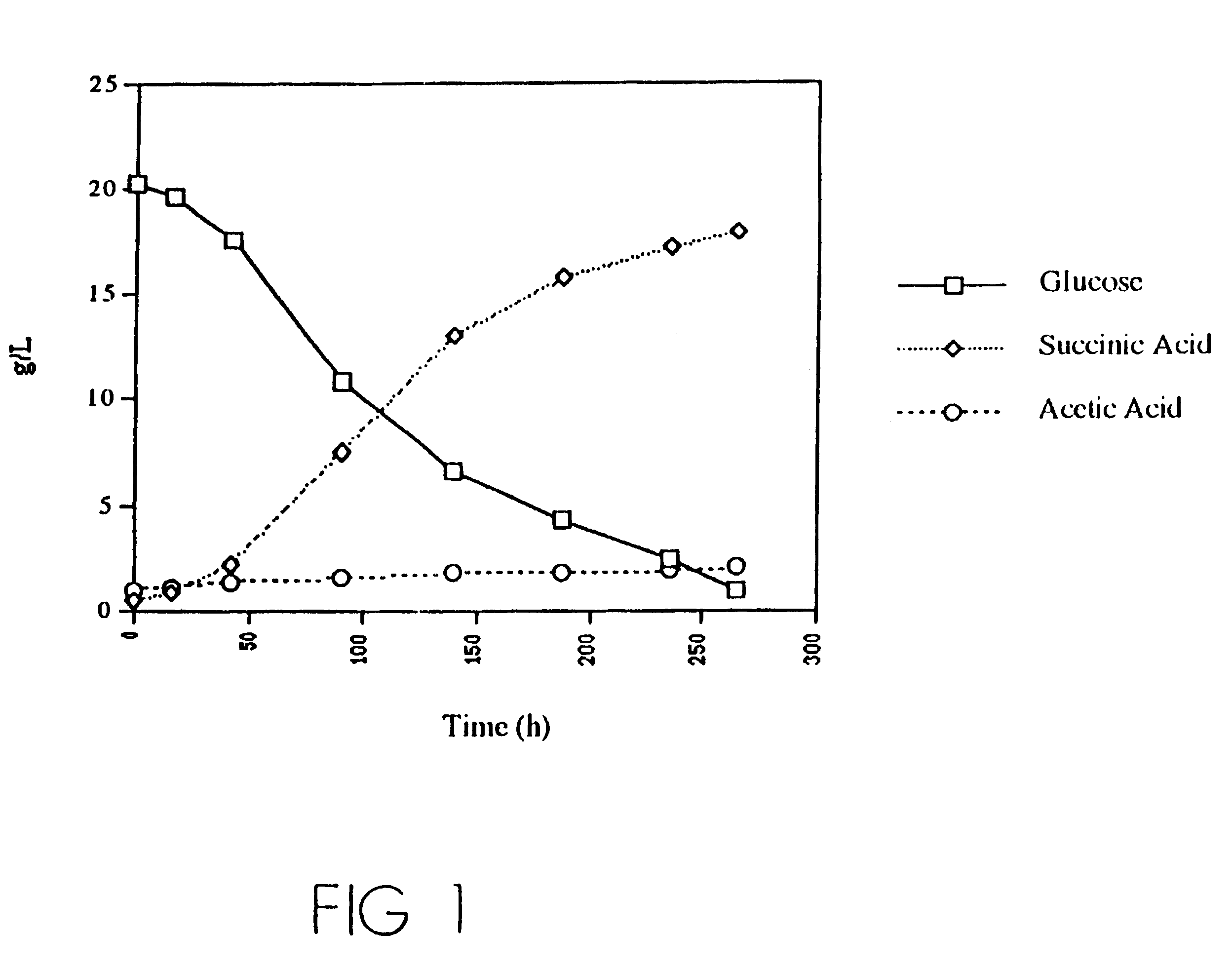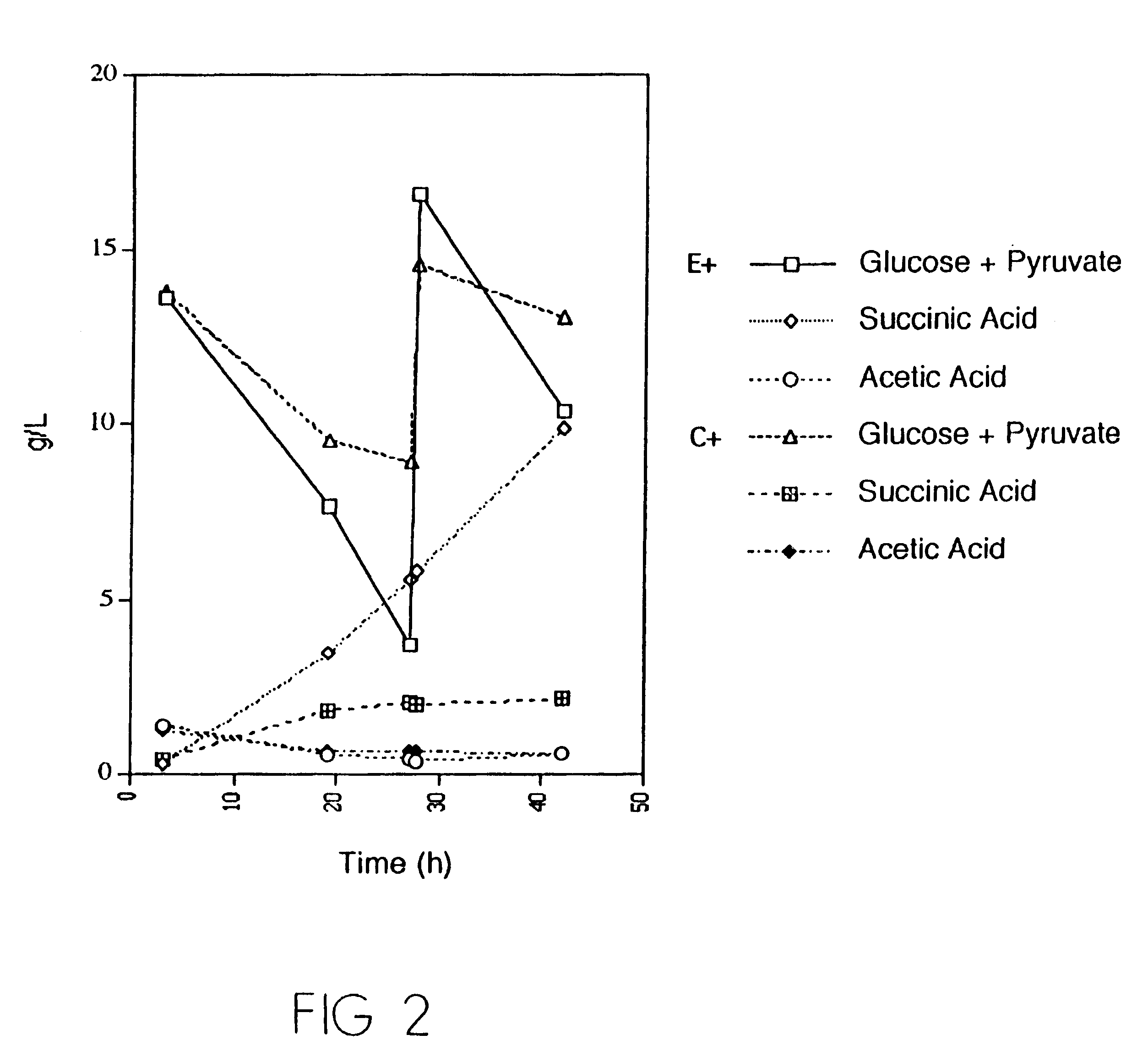Mutant E. coli strain with increased succinic acid production
a technology of e. coli and mutants, applied in the field of bacteria, can solve the problems of inability to convert large amounts of growth substrates, such as glucose, to desired products, and low yield and concentration, and achieve the effect of increasing the biomass of the organism and economic production of the mutants
- Summary
- Abstract
- Description
- Claims
- Application Information
AI Technical Summary
Benefits of technology
Problems solved by technology
Method used
Image
Examples
Embodiment Construction
Generally, the inventors have found a method for determining bacteria which can economically produce high quantities of succinic acid, fumaric acid and malic acid in fermentation processes. E.coli Mutation Detail
In one embodiment, a new mutant strain of E. coli has been developed that will produce increased amounts of succinic acid. The inventors have labeled this strain AFP 111, in as much as the strain has resulted from the efforts of the Alternative Feedstocks Program of the U.S. Department of Energy.
As noted supra, normally, under anaerobic conditions, wild type E. coli produces a mixture of fermentation products, of which succinic acid is a minor component. However, when AFP 111 is grown under anaerobic conditions, the major metabolic product is succinic acid. AFP 111 contains a unique spontaneous chromosomal mutation that produces a mixture of succinic acid, acetic acid and ethanol, with succinic acid as the major product. A maximum yield of 99 percent, weight of succinic acid...
PUM
| Property | Measurement | Unit |
|---|---|---|
| concentrations | aaaaa | aaaaa |
| pH | aaaaa | aaaaa |
| concentrations | aaaaa | aaaaa |
Abstract
Description
Claims
Application Information
 Login to View More
Login to View More - R&D
- Intellectual Property
- Life Sciences
- Materials
- Tech Scout
- Unparalleled Data Quality
- Higher Quality Content
- 60% Fewer Hallucinations
Browse by: Latest US Patents, China's latest patents, Technical Efficacy Thesaurus, Application Domain, Technology Topic, Popular Technical Reports.
© 2025 PatSnap. All rights reserved.Legal|Privacy policy|Modern Slavery Act Transparency Statement|Sitemap|About US| Contact US: help@patsnap.com


